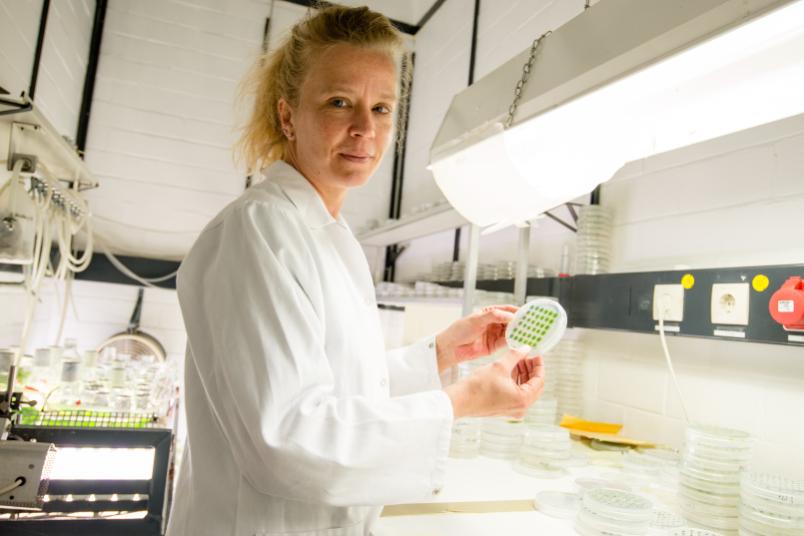
Biology
How a Biocatalyst Might Boost the Growth of Microalgae
A sensor for nitrogen could be hidden behind the extension of an enzyme for the breakdown of starch. If this sensor detects a high level of nitrogen, algal growth switches into turbo mode.
Living organisms consist to a large extent of carbon (C) and nitrogen (N) compounds. These have to be taken in with food or, in the case of plants, produced through photosynthesis. A previously mysterious extension of a starch-degrading enzyme in algae could be a kind of sensor to determine how much nitrogen is currently available. If there is plenty of it, the algal cells quickly release many building blocks for their growth. The research team led by Dr Anja Hemschemeier and Dr Lisa Scholtysek from the Photobiotechnology Group at Ruhr University Bochum, Germany, reports in the journal Plant Direct from June 20, 2024.
A Starch-Degrading Biocatalyst as a Nitrogen Sensor
The optimal composition of a living cell is made up of a certain ratio of C and N, but the quantities of these elements in our diet and in the environment of plants and algae are usually not that perfectly balanced. Therefore, living organisms must tune their metabolism and chemical composition to the availability of these – and other – chemical building blocks.
In plant-like organisms, C-containing molecules that are not immediately utilized are stored as starch. Various types of biocatalysts – also termed enzymes – release C skeletons from starch when they are needed as building blocks or as energy source. One of these enzymes is alpha-amylase, which Anja Hemschemeier’s research team investigated from the microalga Chlamydomonas reinhardtii.
In the process, the team made a surprising discovery: “The enzyme has an extension that is not needed for starch degradation", explains Anja Hemschemeier, who headed the study. “This protein part has already been discovered in a similar form in many different enzymes, where it usually regulates the function of the biocatalyst. Commonly, this protein part senses small compounds that play a role in the corresponding metabolic pathway, so that its speed can be adjusted and coordinated with other pathways.”
Lisa Scholtysek, lead author of the study, tested the effect of many different substances on the activity of this amylase. Finally, she identified one that noticeably increased the activity of the enzyme, namely the amino acid glutamine. This N-containing compound is a building block of proteins. In many organisms, glutamine is also the first product of N assimilation and serves both as the primary N source and as a signal for how much N is available for biosynthetic pathways.
An Alpha-Amylase as Growth Booster?
To date, this combination of starch-degrading enzyme and glutamine sensor has not been described in literature. Still, based on bioinformatic analyses conducted by the researchers, many microalgae appear to possess this specific combination. “Our research is still in its infancy,” says Anja Hemschemeier. “So far, we have studied this effect only at the level of the isolated biocatalyst from Chlamydomonas. An important next step is to study it in living algae.”
However, the researchers have a hypothesis: “It is conceivable that this alpha-amylase registers when a lot of nitrogen is present. Then, it accelerates the release of C scaffolds from starch for the production of N- and C-containing cell components.” This could optimize cell growth when the algae encounter optimal conditions.